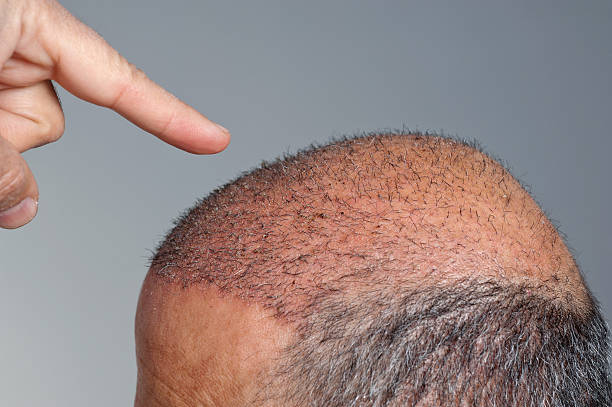Hair Transplants in the UK: Natural Results Without Traveling Abroad
Hair loss is a challenge faced by millions of men and women across the United Kingdom, often affecting confidence and daily life. While many consider traveling abroad – especially to Turkey – for hair restoration, modern hair transplant procedures are now widely available in the UK. Certified clinics and experienced specialists provide access to FUE and FUT techniques locally, removing the need for long trips. Patients are especially interested in realistic results, recovery times, costs, and long-term care. This article explores the main methods, what to expect during and after the procedure, and how to choose a reputable clinic in the United Kingdom.

Understanding FUE and FUT Hair Transplant Methods
The two primary hair transplant techniques available in the UK are Follicular Unit Extraction (FUE) and Follicular Unit Transplantation (FUT). FUE involves extracting individual hair follicles directly from the donor area using a specialized punch tool, leaving tiny circular scars that are virtually invisible. This method allows for shorter recovery times and the flexibility to wear hair very short without noticeable scarring.
FUT, also known as the strip method, involves removing a strip of scalp from the donor area and dissecting it into individual follicular units under a microscope. While this technique leaves a linear scar, it often allows surgeons to harvest more grafts in a single session and may be more cost-effective for patients requiring extensive coverage. Both methods can achieve excellent results when performed by experienced surgeons.
Essential Requirements for Successful Hair Transplantation
A successful hair transplantation requires several key factors to align properly. Patients must have sufficient donor hair density in the back and sides of the scalp, as these areas are typically resistant to pattern baldness. The donor area should provide enough healthy follicles to achieve the desired coverage while maintaining natural density in the extraction zone.
Realistic expectations play a crucial role in treatment success. Hair transplants redistribute existing hair rather than creating new hair, so patients with advanced hair loss may need multiple sessions or may not be suitable candidates. Good overall health, stable hair loss patterns, and commitment to post-operative care instructions are essential for optimal outcomes.
Achieving Natural Results and Managing Recovery
Natural-looking results depend heavily on the surgeon’s artistic skill in designing the hairline and distributing grafts to mimic natural hair growth patterns. Experienced practitioners consider factors such as hair direction, angle of implantation, and density variations to create results that blend seamlessly with existing hair.
The recovery process typically involves mild swelling and discomfort for the first few days, with most patients returning to work within a week. Transplanted hair initially falls out after 2-4 weeks, which is completely normal, before new growth begins around the third month. Final results become apparent 12-18 months post-procedure, with continued improvement possible up to two years.
Understanding Risks and Potential Complications
Like any surgical procedure, hair transplants carry certain risks that patients should understand before proceeding. Common side effects include temporary swelling, bruising, and numbness in the treated areas. Some patients experience temporary shock loss, where existing hair around the transplant site temporarily falls out before regrowing.
More serious complications, while rare when performed by qualified surgeons, can include infection, excessive bleeding, or poor graft survival. Unnatural-looking results may occur if the procedure is performed by inexperienced practitioners or if post-operative instructions are not followed properly. Choosing a reputable clinic with proper medical oversight significantly reduces these risks.
Benefits of Selecting Certified UK Clinics Over Medical Tourism
UK hair transplant clinics operate under strict medical regulations enforced by bodies such as the Care Quality Commission (CQC) and the General Medical Council (GMC). This regulatory framework ensures that practitioners meet specific qualifications, facilities maintain proper standards, and patients have recourse if issues arise. Additionally, UK-based treatments eliminate the risks associated with traveling immediately after surgery and provide easier access to follow-up care.
Many UK clinics offer comprehensive aftercare packages, including regular check-ups, emergency consultations, and revision procedures if needed. The ability to return easily for follow-up appointments ensures better monitoring of healing progress and early intervention if complications arise. Language barriers and communication issues, which can complicate medical tourism, are eliminated when receiving treatment locally.
| Clinic Type | Average Cost Range | Key Benefits |
|---|---|---|
| UK Private Clinics | £3,000-£8,000 | Regulatory oversight, easy follow-up care, established medical standards |
| Medical Tourism (Turkey) | £1,500-£3,500 | Lower upfront costs, package deals including accommodation |
| UK NHS (Limited Cases) | £0-£500 | Minimal cost for qualifying conditions, full medical integration |
Prices, rates, or cost estimates mentioned in this article are based on the latest available information but may change over time. Independent research is advised before making financial decisions.
The decision to undergo hair transplantation represents a significant investment in both time and money. While overseas options may appear more economical initially, the total cost including travel, accommodation, and potential complications often narrows the price gap considerably. UK-based procedures offer the security of regulated medical practice, convenient aftercare, and the peace of mind that comes with receiving treatment in a familiar healthcare environment. For many patients, these advantages justify choosing local treatment over medical tourism alternatives.
This article is for informational purposes only and should not be considered medical advice. Please consult a qualified healthcare professional for personalized guidance and treatment.




